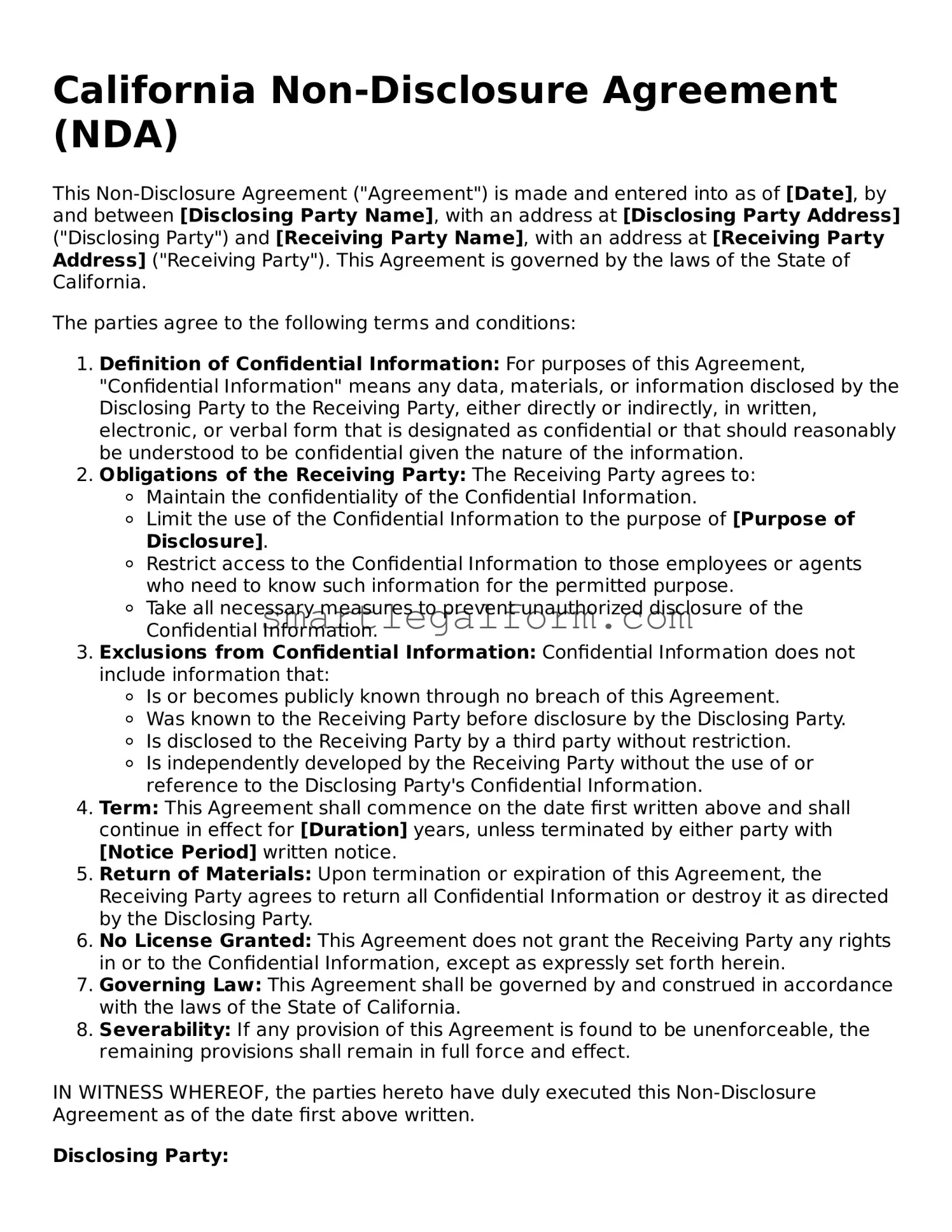California Non-Disclosure Agreement (NDA)
This Non-Disclosure Agreement ("Agreement") is made and entered into as of [Date], by and between [Disclosing Party Name], with an address at [Disclosing Party Address] ("Disclosing Party") and [Receiving Party Name], with an address at [Receiving Party Address] ("Receiving Party"). This Agreement is governed by the laws of the State of California.
The parties agree to the following terms and conditions:
- Definition of Confidential Information: For purposes of this Agreement, "Confidential Information" means any data, materials, or information disclosed by the Disclosing Party to the Receiving Party, either directly or indirectly, in written, electronic, or verbal form that is designated as confidential or that should reasonably be understood to be confidential given the nature of the information.
- Obligations of the Receiving Party: The Receiving Party agrees to:
- Maintain the confidentiality of the Confidential Information.
- Limit the use of the Confidential Information to the purpose of [Purpose of Disclosure].
- Restrict access to the Confidential Information to those employees or agents who need to know such information for the permitted purpose.
- Take all necessary measures to prevent unauthorized disclosure of the Confidential Information.
- Exclusions from Confidential Information: Confidential Information does not include information that:
- Is or becomes publicly known through no breach of this Agreement.
- Was known to the Receiving Party before disclosure by the Disclosing Party.
- Is disclosed to the Receiving Party by a third party without restriction.
- Is independently developed by the Receiving Party without the use of or reference to the Disclosing Party's Confidential Information.
- Term: This Agreement shall commence on the date first written above and shall continue in effect for [Duration] years, unless terminated by either party with [Notice Period] written notice.
- Return of Materials: Upon termination or expiration of this Agreement, the Receiving Party agrees to return all Confidential Information or destroy it as directed by the Disclosing Party.
- No License Granted: This Agreement does not grant the Receiving Party any rights in or to the Confidential Information, except as expressly set forth herein.
- Governing Law: This Agreement shall be governed by and construed in accordance with the laws of the State of California.
- Severability: If any provision of this Agreement is found to be unenforceable, the remaining provisions shall remain in full force and effect.
IN WITNESS WHEREOF, the parties hereto have duly executed this Non-Disclosure Agreement as of the date first above written.
Disclosing Party:
_____________________________
[Disclosing Party Name]
[Title]
Receiving Party:
_____________________________
[Receiving Party Name]
[Title]
